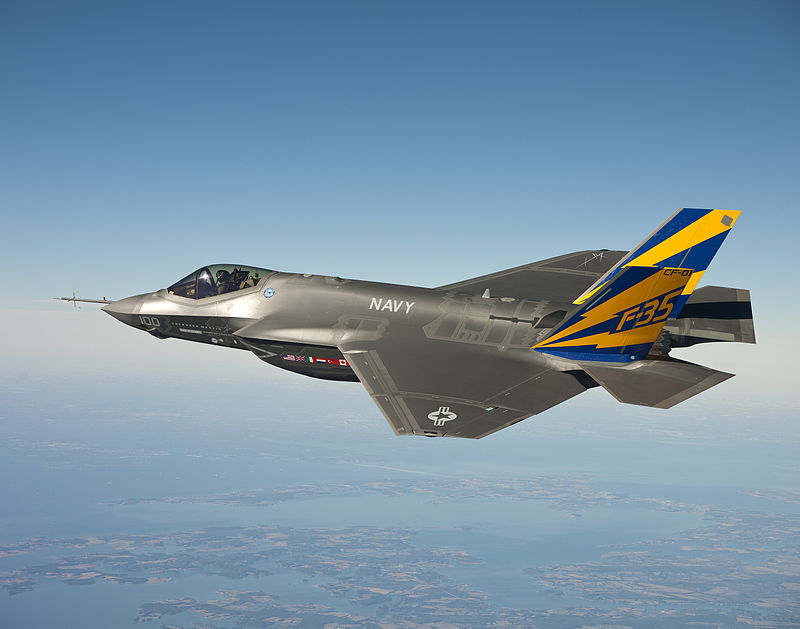| Home; Aviation; Cameras; Fiction; Health&Safety; Military; MS-Apps; Non-Fiction; Submarine; Technical; Trains; Watches; Transportation |
|---|
The Lockheed Martin F-35 Strike Fighter
Courtesy Aviation Week and Space Technology, June 23, 2008 and Wikipedia, the free encyclopedia, for the photograph.
Edited by David Barth, September 14, 2008.
 |
| F35 Joint Strike Fighter (JSF). |
By Andy Wolfe - This Image was released by the United States Navy with the ID 110211-O-XX000-001 (next). This tag does not indicate the copyright status of the attached work. A normal copyright tag is still required. See Commons:Licensing for more information, Public Domain, https://commons.wikimedia.org
/w/index.php?curid=16185482
The F-35 Joint Strike Fighter (JSF), built by Lockheed Martin, is a multirole aircraft. It has the capability of Low Observable [stealth] Electronic Attack (LO EA). To maintain low observability, it utilizes a low-probability-of-intercept active radar and passive sensors. It will not fly in proximity with fourth-generation aircraft, but instead, will roam alone in well-defended enemy airspace, feeding targeting information to more remote nonstealthy aircraft that can deliver standoff-range weapons.
Its electronic attack ability includes jamming, spoofing, and delivering pulses of energy generated by laser and other high-energy weapons. It uses an advanced, active, electronically scanned array (AESA) radar antenna in the nose to deliver destructive energy pulses to targets within an arc of 30 degrees right or left of the nose.
In addition, it can also deliver traditional, kinetic explosive weapons such as the AIM-9X air-to-air missile that can be launched against targets, off-boresight, at any azimuth to the nose of the aircraft.
The next generation system is expected to do the following:
- Increase the number of jamming beams.
- Increase the effective radiated power to increase the range of destruction.
- Give greater polar diversity.
- Rivet Joint for signals intelligence (Sigint).
- Cobra Ball for measurements and signatures intelligence (Measint).
- Compass Call for electronic attack (EA),
- Traditional kinetic weapon delivery, 180 degrees right or left of the nose.
- Pulse energy weapons, such as high-power laser beams, 30 degrees off the nose.
- Sigint.
- Measint.
- EA
- Jamming.
- Spoofing.